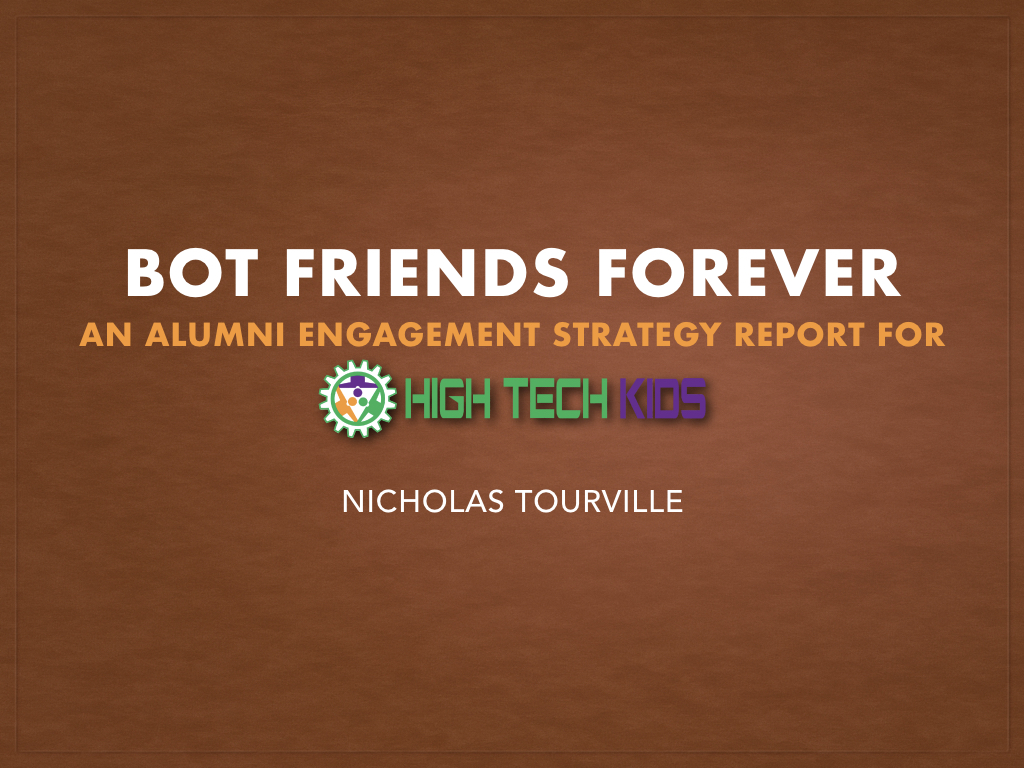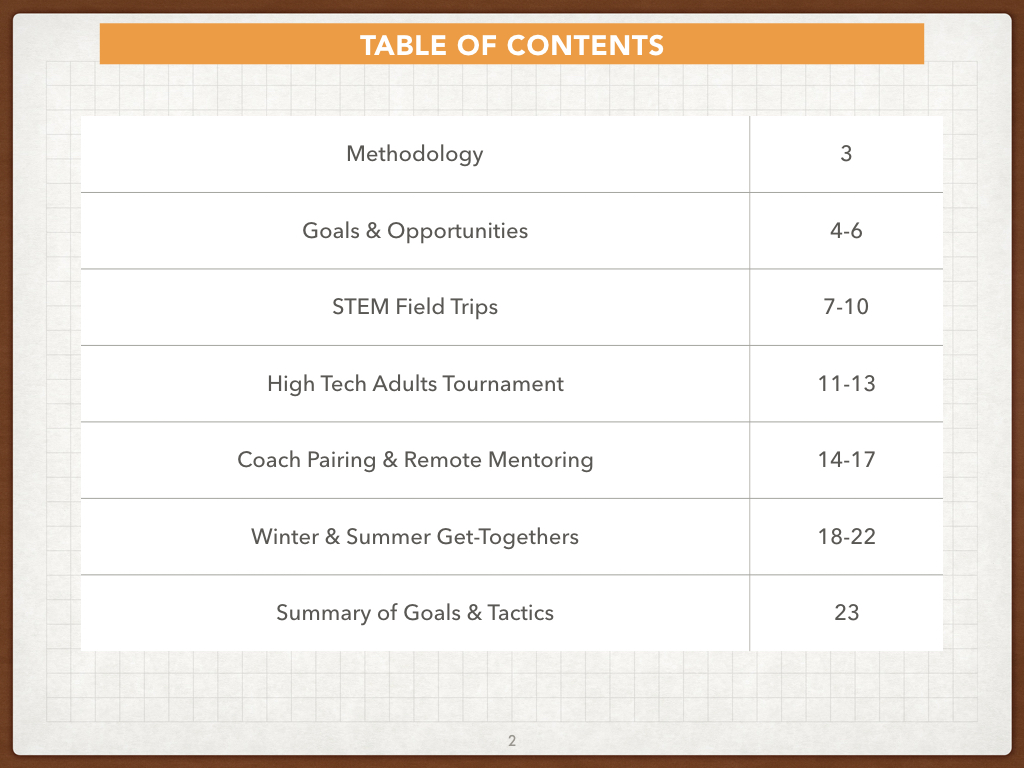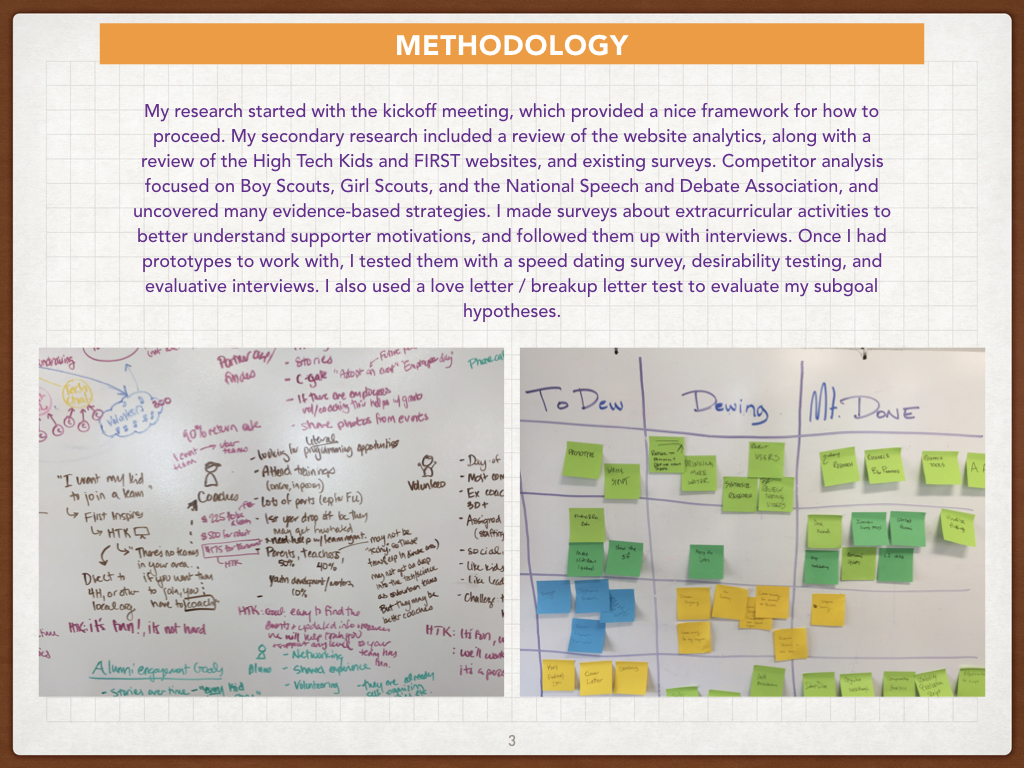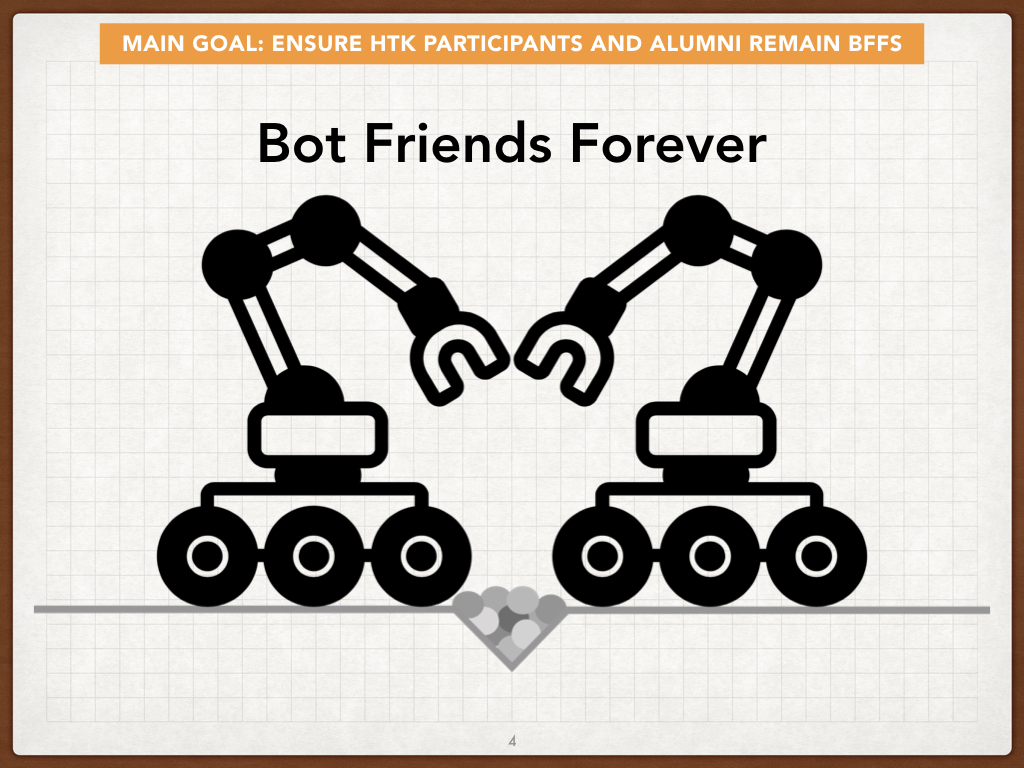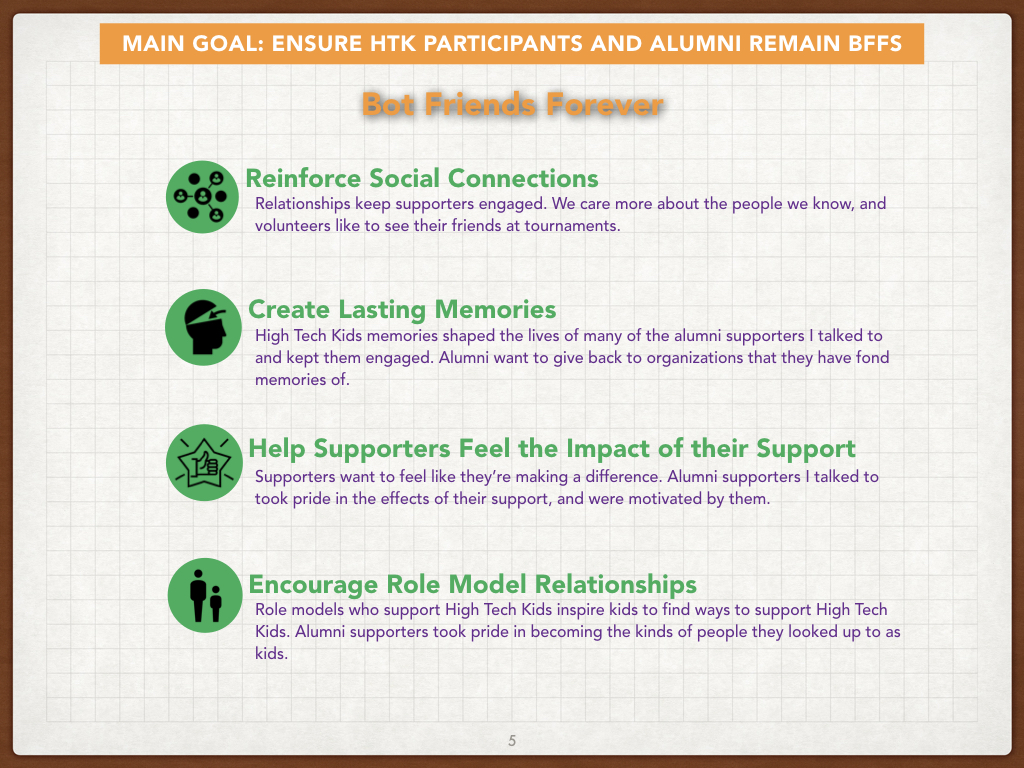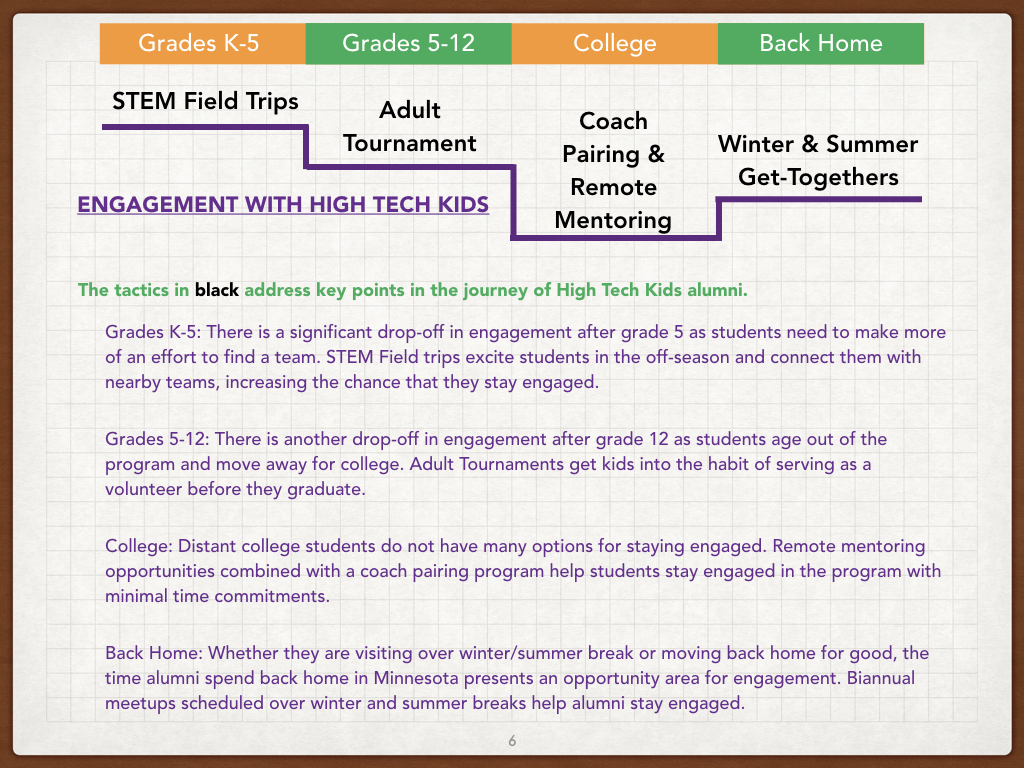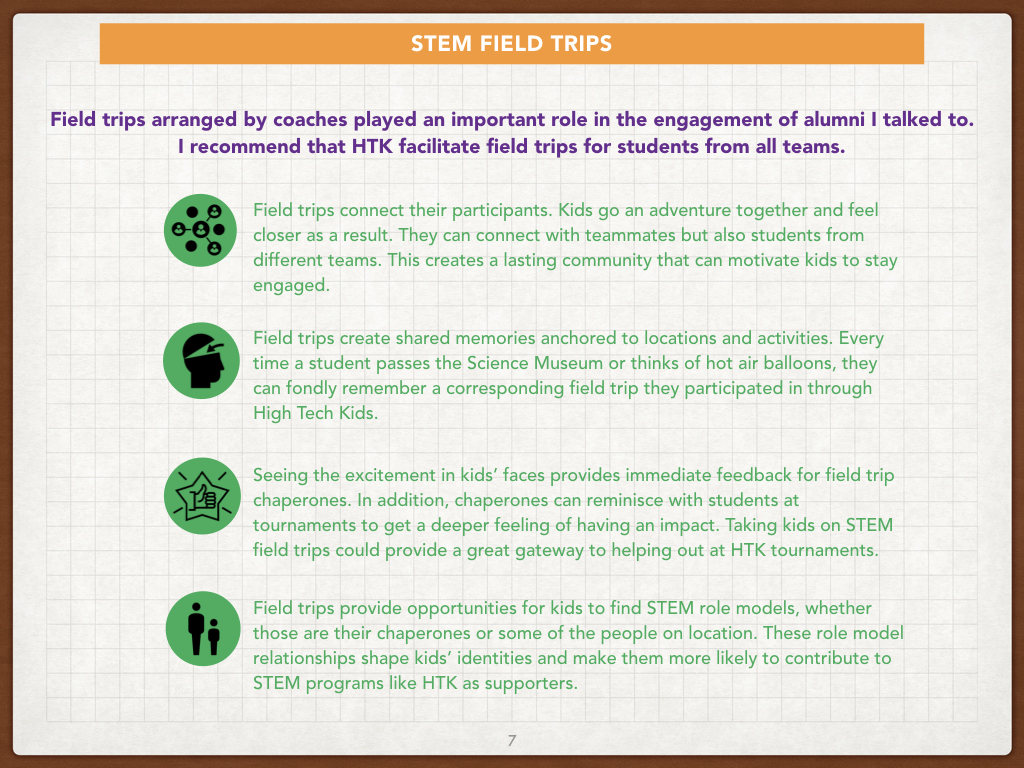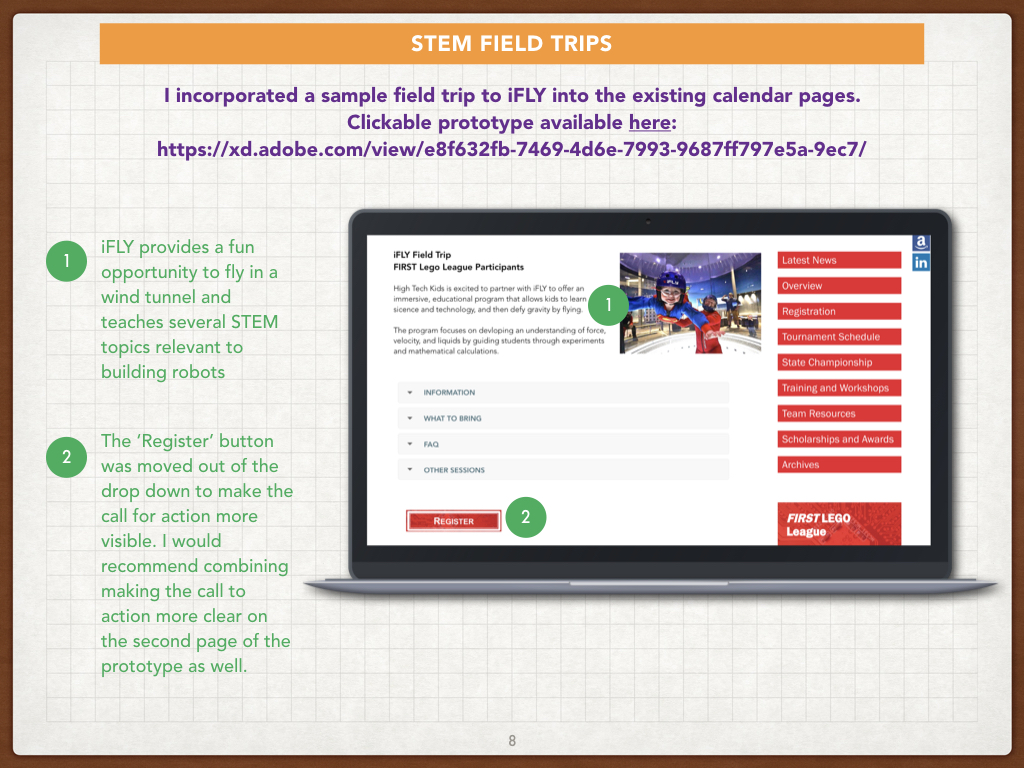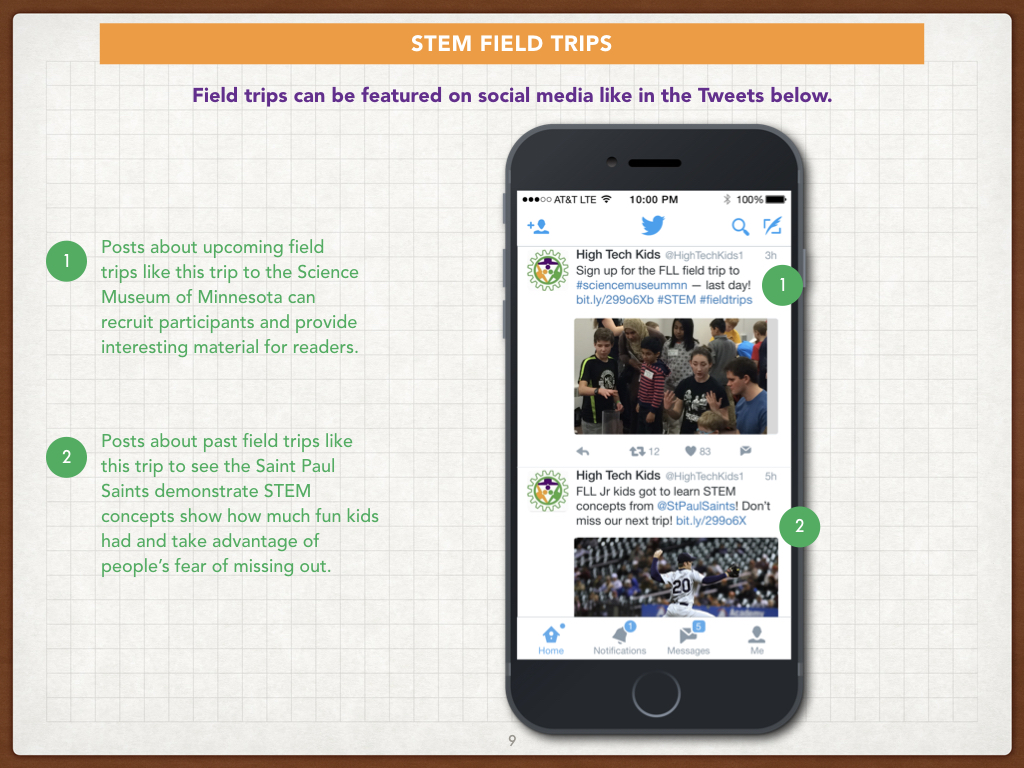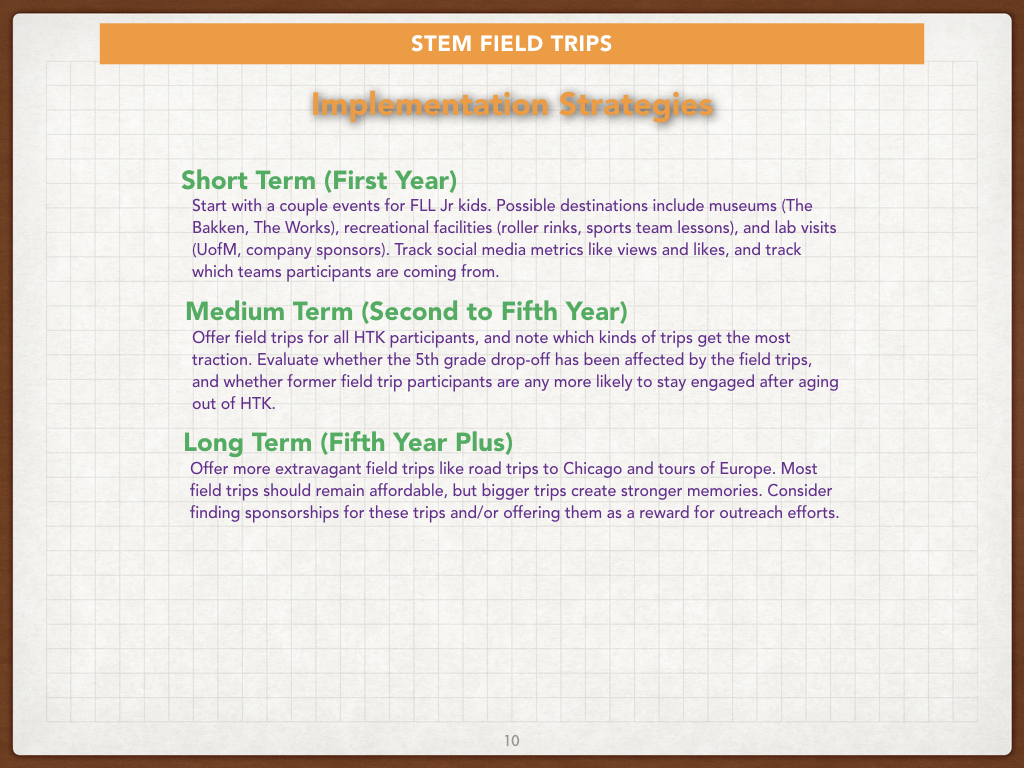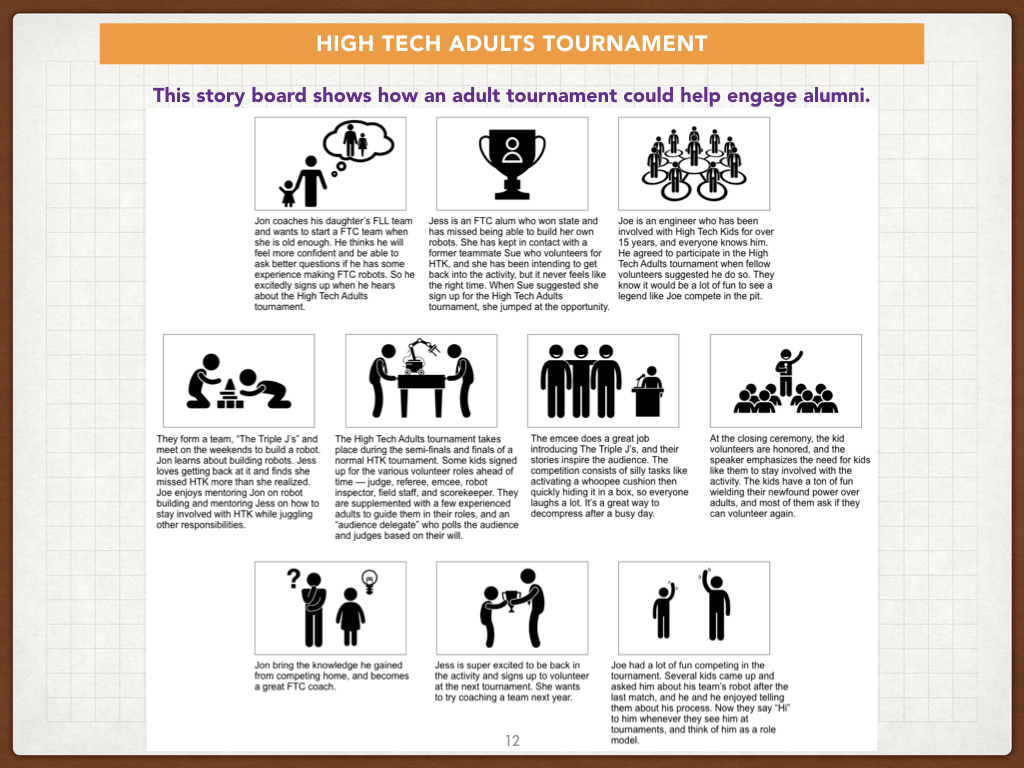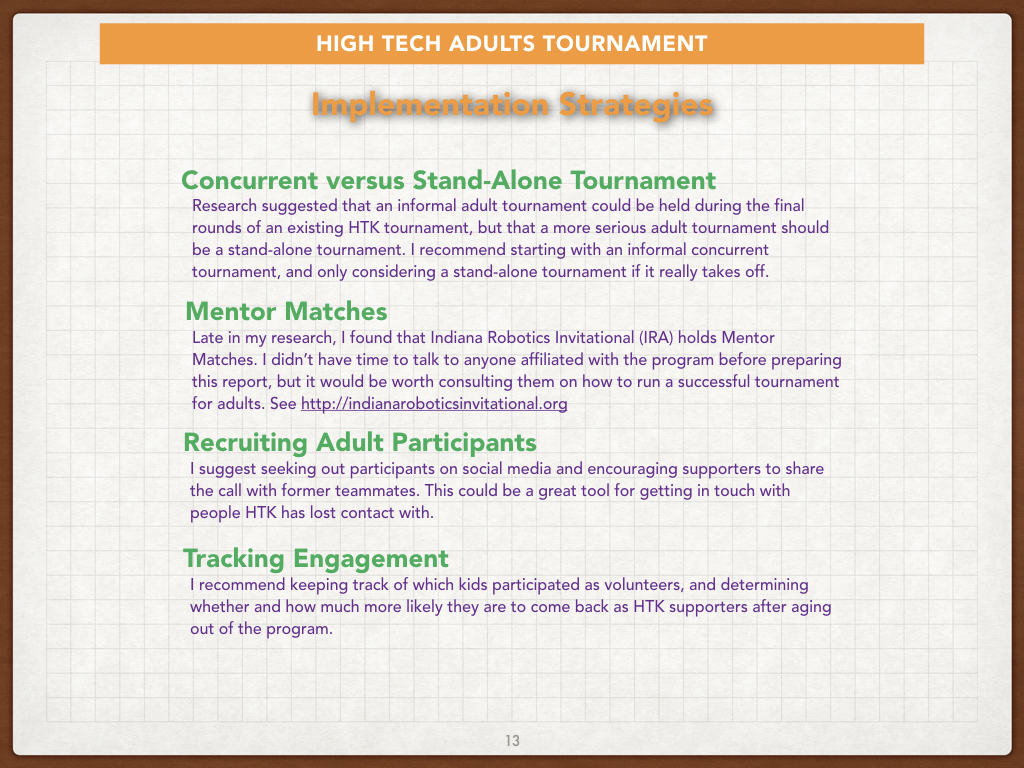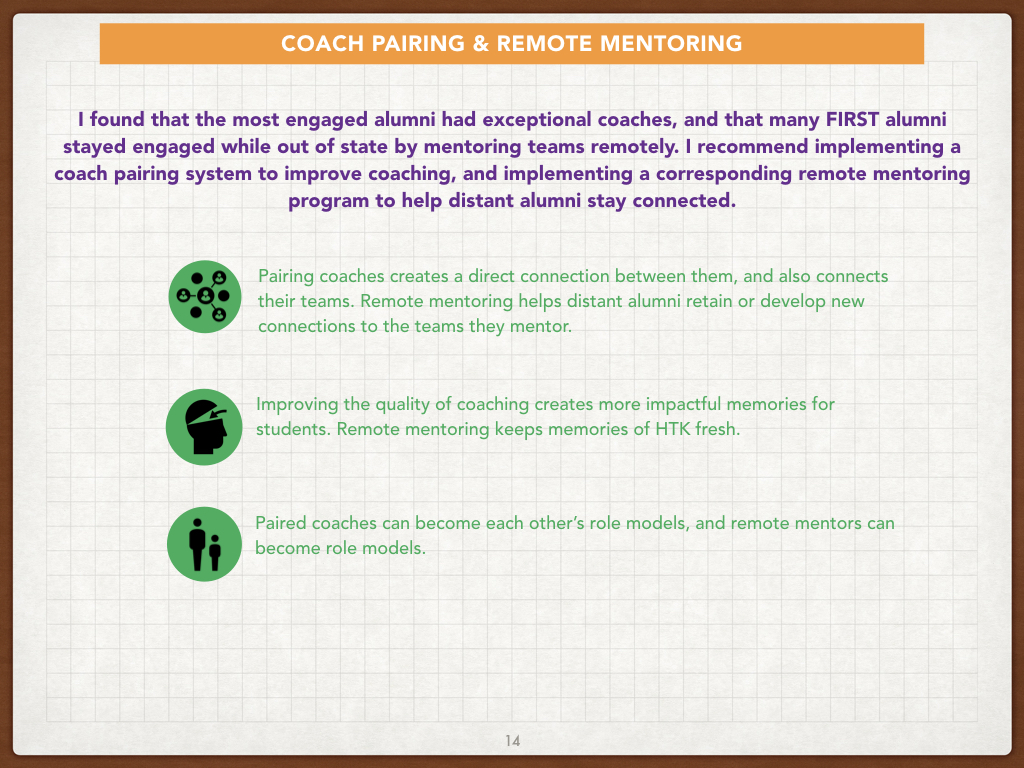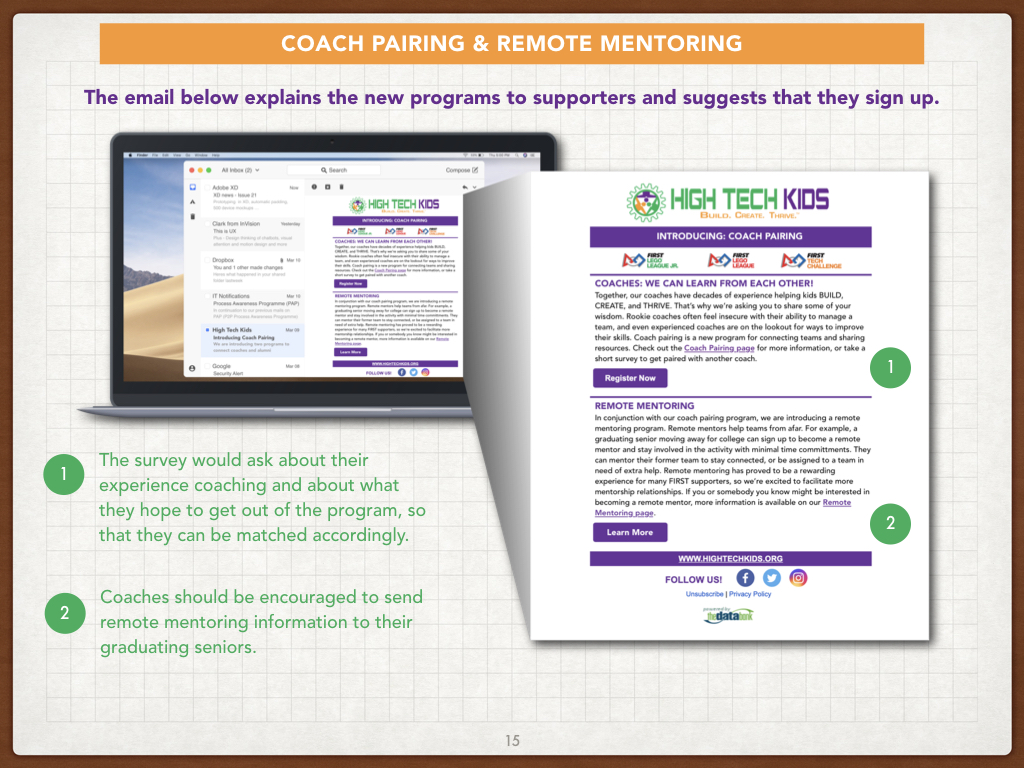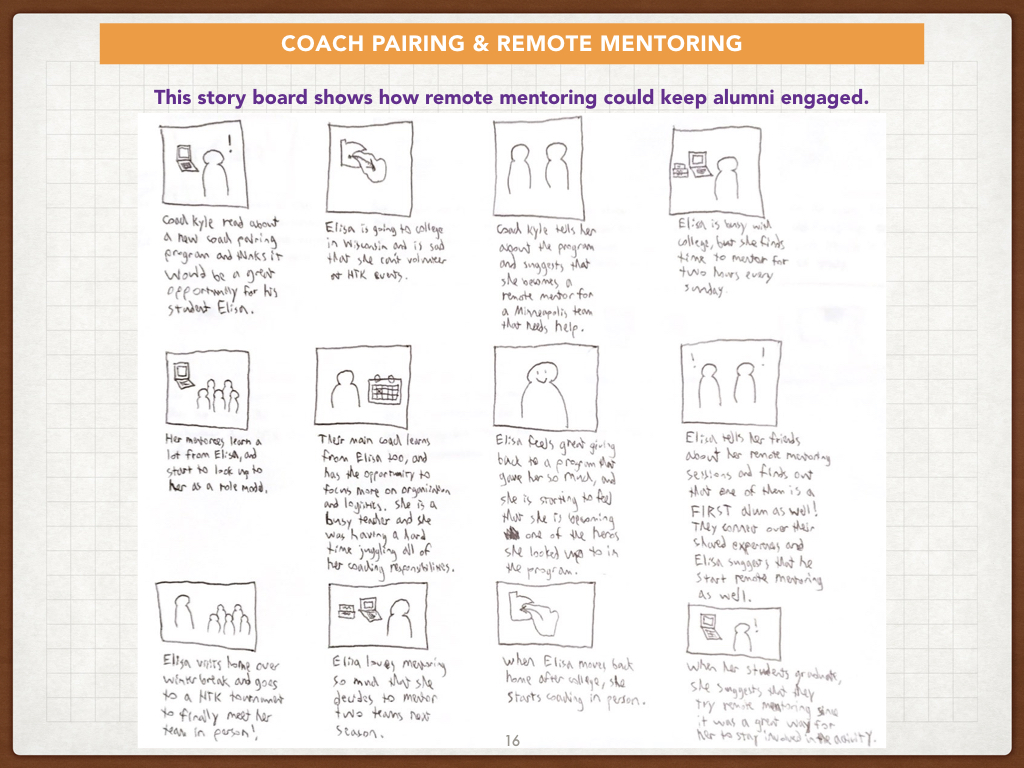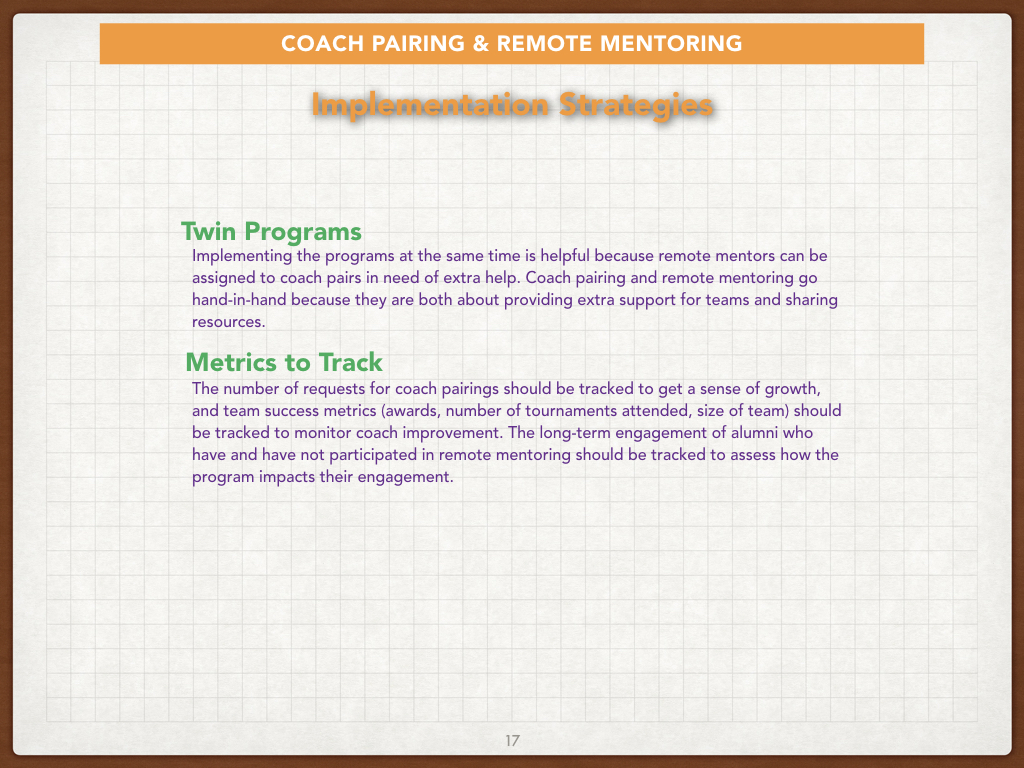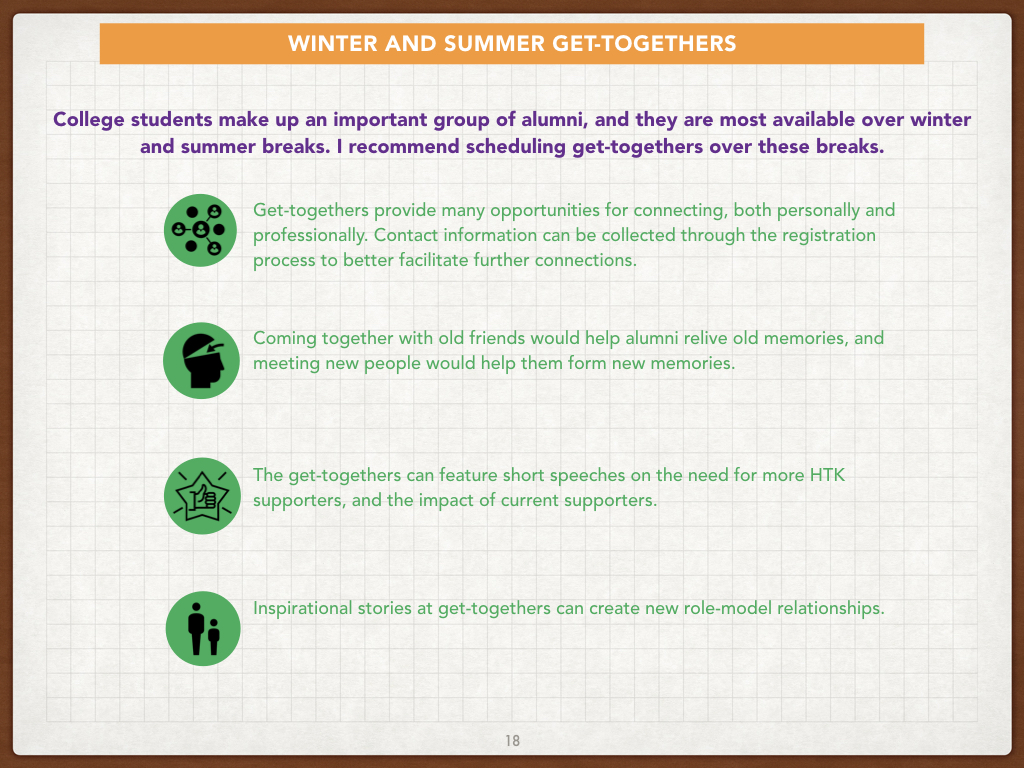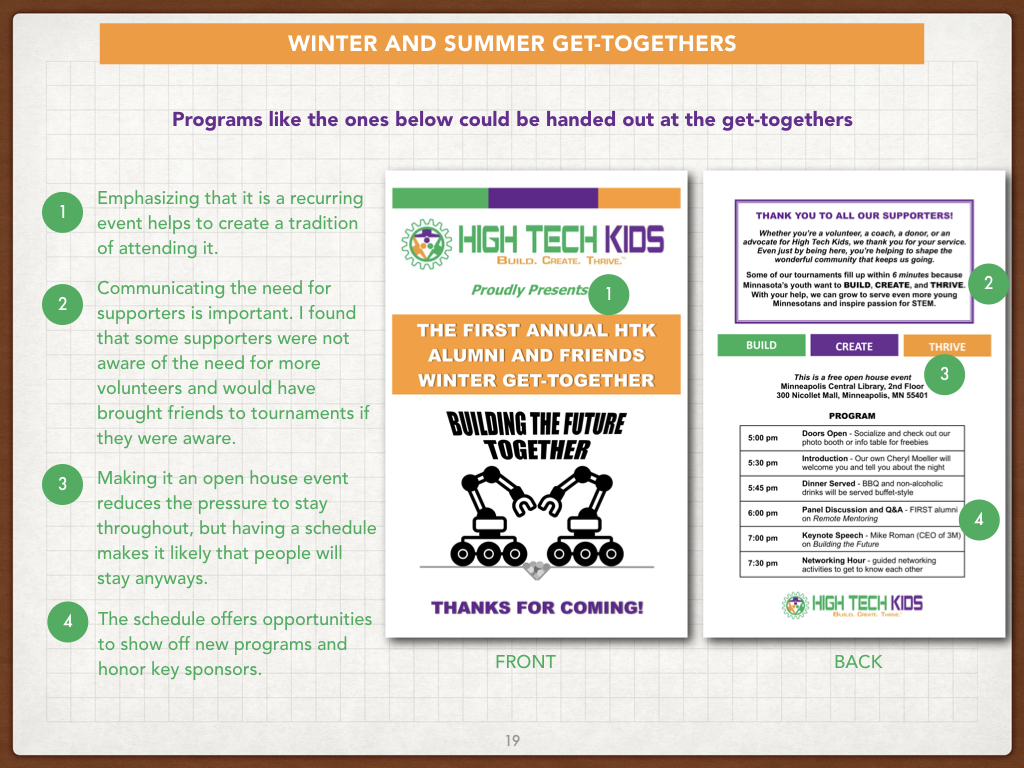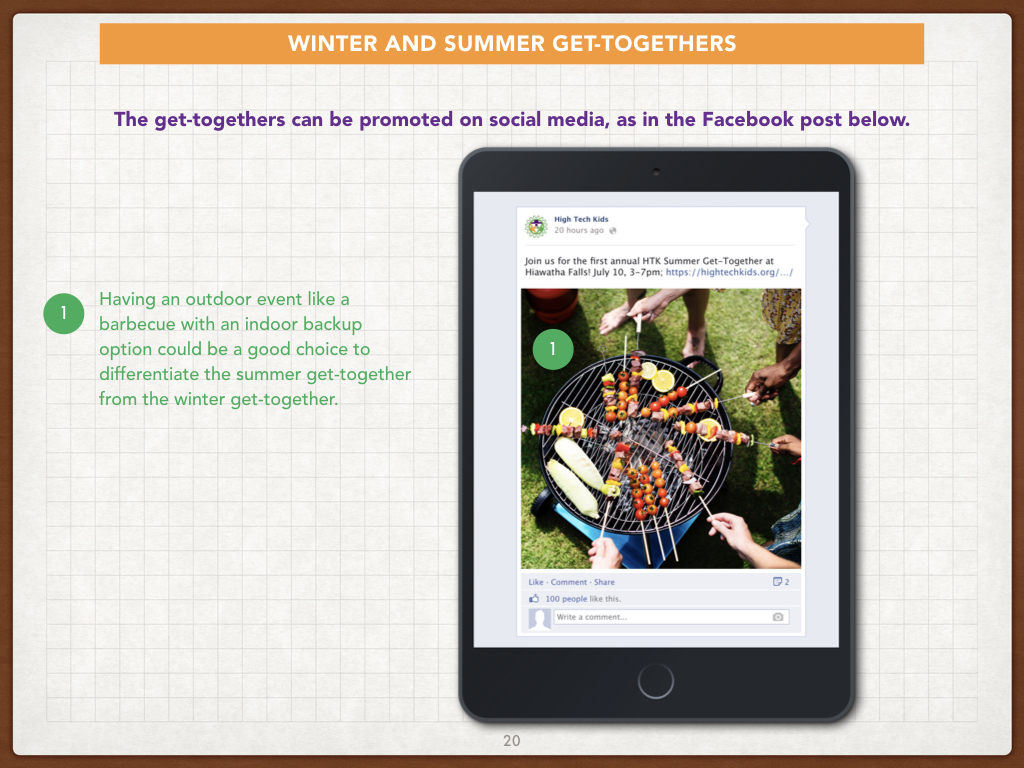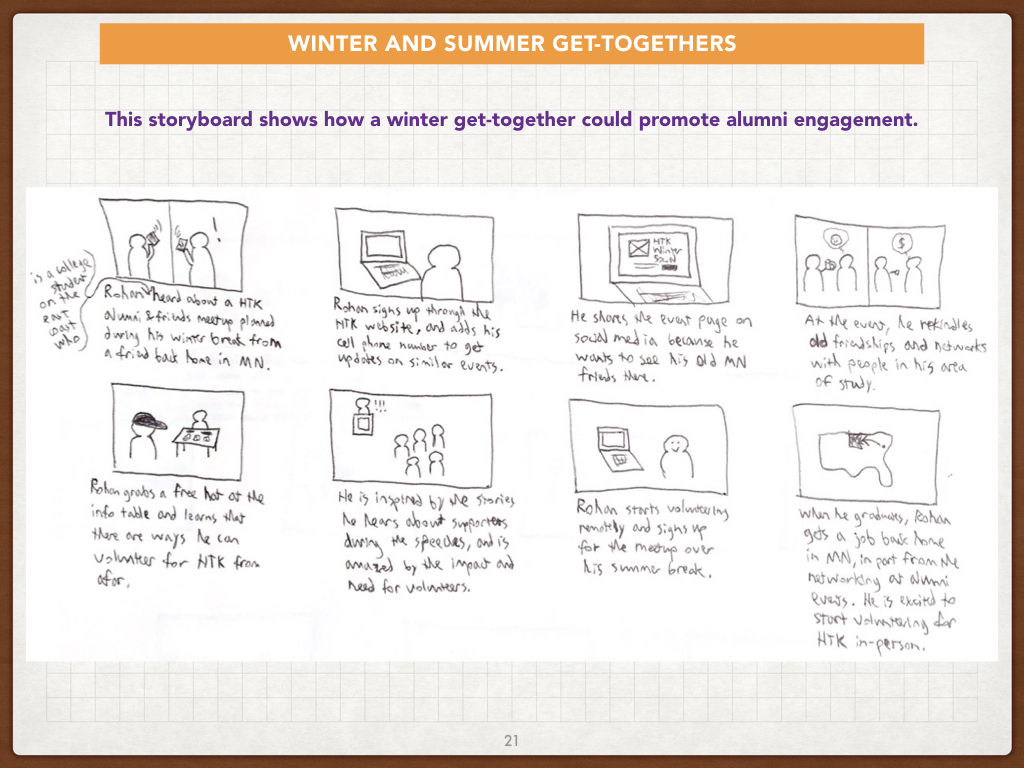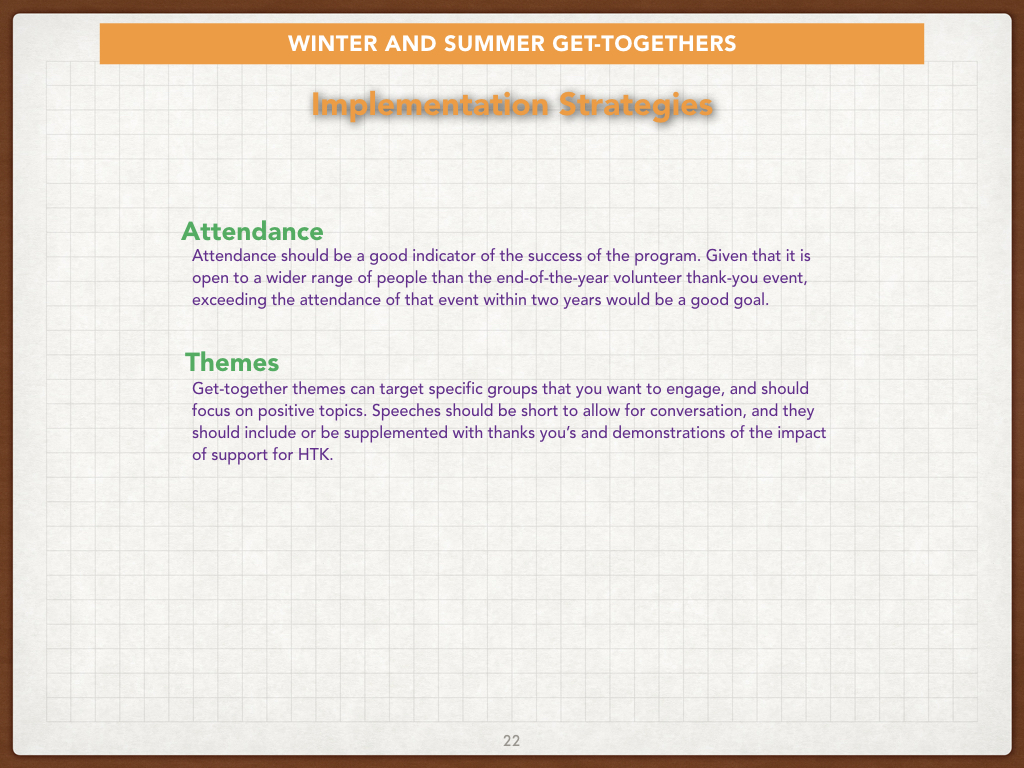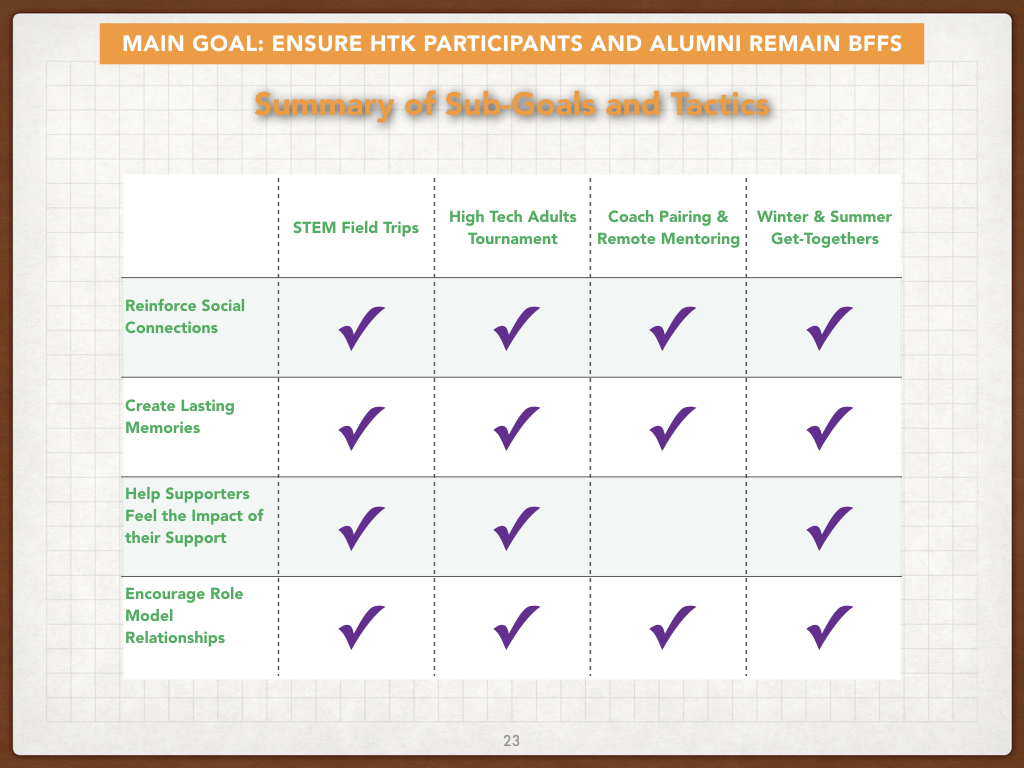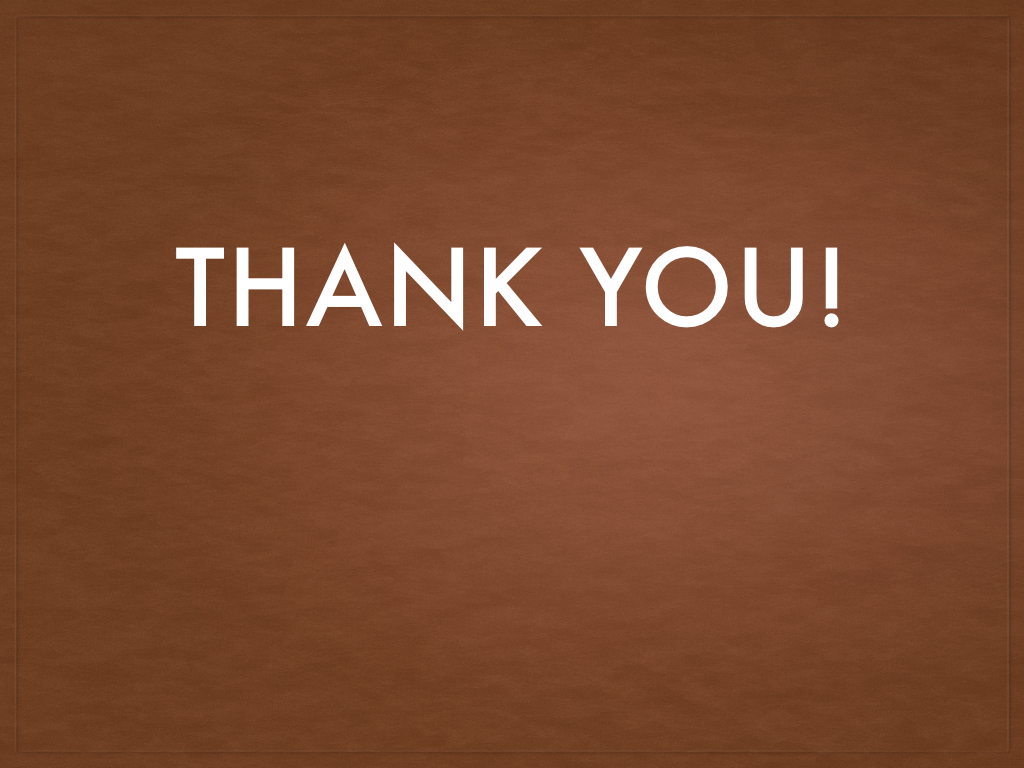Methods Used: Stakeholder Interview, Secondary Research, Competitor Analysis, Survey, Directed Storytelling, Interview, Low-Fidelity Prototyping, Storyboarding, Speed Dating, Desirability Testing, Love Letter/Breakup Letter, High-Fidelity Prototyping
Tools Used: Otter, Trello, Post-It Notes, Google Forms, Pen & Paper, Canva, Index Cards, Google Hangouts, Sketch, Adobe XD, Keynote
Key Themes: Multi-touchpoint experience, Building a Community, Research, UX Strategy
This simple journey map shows aggregate changes in engagement, and helped motivate the selection of tactics shown.
Finding opportunity areas
I started with a stakeholder interview, which helped me understand High Tech Kids’ goals and their current user journey. There is significant demand for their tournaments (some fill up within six minutes!), but to serve more students, they need coaches to guide teams and volunteers to run tournaments. Increasing the fraction of alumni who stay engaged as supporters is key — both because alumni tend to be especially qualified for these positions and because it creates a positive feedback loop (more engaged alumni means higher participant numbers and higher participant numbers means more alumni that can stay engaged). The biggest drops in engagement with High Tech Kids occur after Grade 5, and after Grade 12; and there is an increase in engagement as students move back home to Minnesota from college. These changes in engagement defined the phases that I targeted with my design strategy, as shown in the journey map to the left.
Overcoming challenges
“...the Boy Scouts’ highly successful ‘Once a scout, always a scout’ motto inspired my similar ‘Bot Friends Forever’ or ‘BFFs’ motto and focused my efforts.”
The biggest challenge I faced was that the least engaged alumni are also the least accessible. I surveyed and interviewed plenty of engaged alumni, but since I was trying to engage alumni that would not otherwise be engaged, I wanted to understand the experiences of alumni who did not stay engaged — the alumni that High Tech Kids had lost track of. I addressed this challenge in a number of ways:
I researched comparable organizations like Boy Scouts, Girl Scouts, and the National Speech and Debate Association. I learned from their decades of experience and identified insights that might generalize to High Tech Kids. For example, the Boy Scouts’ highly successful “Once a scout, always a scout” motto inspired my similar “Bot Friends Forever” or “BFFs” motto and focused my efforts.
I looked through years of survey data High Tech Kids had collected with a focus on supporters who said they did not plan to return the following year.
I researched extracurricular activity participants more generally, using surveys and interviews to understand what motivates people to stay engaged, and what unengaged alumni have in common.
I asked engaged alumni about their peers, who sometimes stayed in contact despite no longer staying engaged in the activity.
I got scrappy, contacting out-of-state alumni who couldn’t stay engaged, and in one case, quickly throwing together a 10-minute research protocol for a High Tech Kids coach that one of my colleagues was using for usability testing.
A calendar showing key dates for my project. I also made a digital version of this calendar
Timing the steps of my project
I made a calendar to scope out the project, and made some adjustments based on the alumni I was able to recruit for interviews. For example, I found many relevant alumni interviews on a blog during discovery research, so I decided to save certain key interviews for later in the process to test hypotheses about which general findings applied to High Tech Kids, and to get a detailed understanding of how best to implement my tactics. Although this was a solo project, I was sharing some research participants with colleagues, so it made sense to come together as a team and use kanban boards to plan our tasks twice a day.
Some post-it notes from the kanban board
I sketched initial thoughts for each tactic I had ideated. I ended up significantly changing this idea based on evaluative research, but parts of it ended up in the final report
Focusing in on a strategy
I synthesized my discovery research using Trello and came up with over a dozen tactics worth considering. I sketched preliminary thoughts and low-fidelity wireframes for these ideas, and eliminated a few as I thought them out. Then I grouped them by the values they served and made a speed-dating survey that asked whether users held the salient value, and how well the relevant idea (expressed through a storyboard) served that value. Some High Tech Kids alumni were not available for interviews, so this survey was a nice alternative to get a mix of qualitative and quantitative data. I also used desirability testing to get a grip on the emotions evoked by my prototypes, and a version of the love letter/breakup letter method to test my hypotheses about user motivations.
Part of a speed-dating survey I was able to quickly make with stock photos using Canva
I presented my design strategy in front of an audience that included most of the High Tech Kids staff
Developing and presenting high-fidelity prototypes
Once I settled on which tactics I would move forward with, I made high-fidelity prototypes for each. This included interactive webpages and storyboards made in Adobe XD; and social media posts, an email, and an event program made in Sketch. This was an iterative process informed by the evaluative research I was conducting at the same time. The next steps were preparing these prototypes for a Keynote presentation in front of an audience including the main stakeholders, and supplementing them with annotations for a final report.
Bringing it all together for the client
I submitted a final report with each high-fidelity prototype (i) annotated, (ii) motivated in terms of four well-defined, research backed goals, and (iii) paired with implementation strategies like short-term versus long term goals and key performance indicators to track. The final report can be viewed here or in the slideshow below, and includes a link to an interactive prototype.
Touchpoints included websites, event programs, emails, Tweets, Facebook posts, and more.
